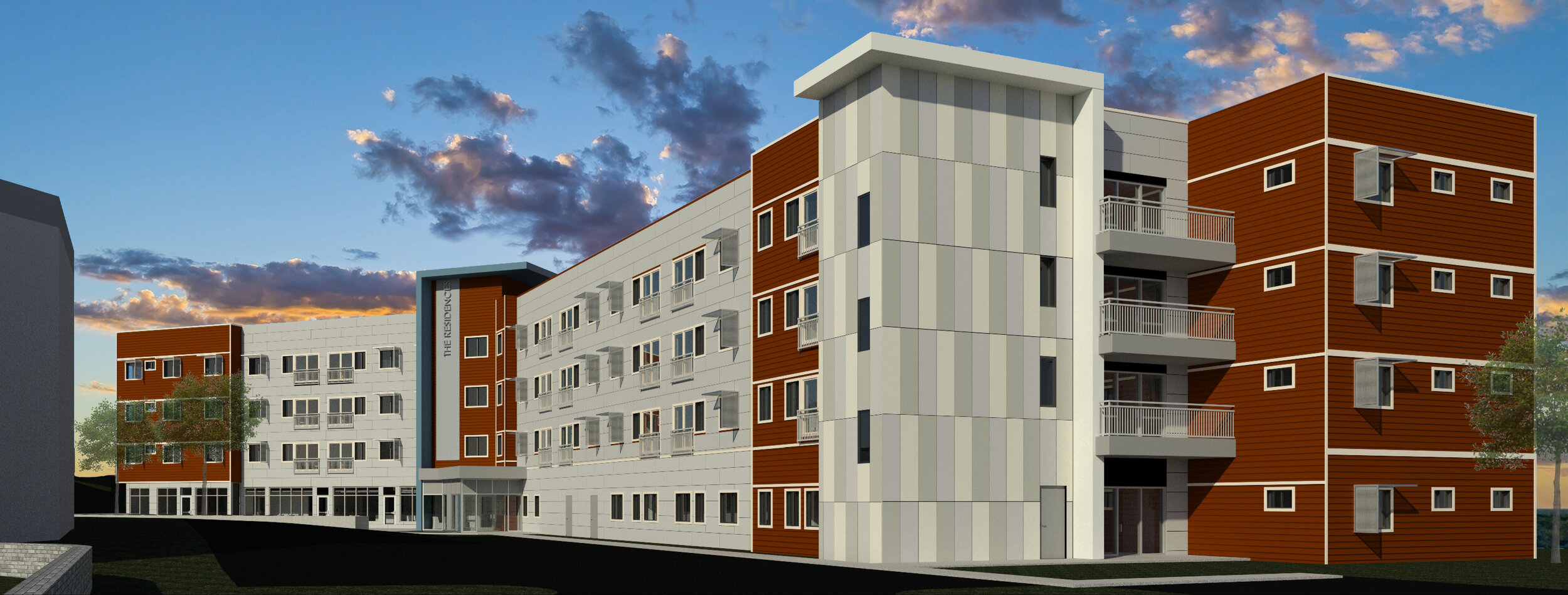Years ago, St. Anne’s recognized the need for affordable senior housing options in northern Montgomery County and struck a partnership with Mission First Housing Group, a non-profit organization that builds affordable housing, to build CainCommons.
The building is named in honor of the founding members of St. Anne’s Episcopal Church, Herbert and Elizabeth (Lib) Cain.
We welcome Cain Commons residents to share in our community of faith at St. Anne’s. We believe that seniors—with their decades of memories and experiences—will offer much. By sharing our lives and stories, we will learn from each other!
What Is Cain Commons? Cain Commons is a four-story, 76-unit apartment building next to St. Anne’s Episcopal Church that serves seniors aged 62 and older in northern Montgomery County.
Operated by Columbus Property Management, the independent living facility opened in October 2023 with one- and two-bedroom apartment floorplans.
Apartments include kitchens with efficient appliances and granite countertops, individually controlled HVAC, and spacious living areas. Laundry rooms are located on each floor.
Community amenities available to all residents include a lobby, club room, lounge with computer terminals, fitness room, and library/meeting room.
On-site parking allows residents to come and go as they please. Small pets are welcome.
What is affordable housing? Affordable housing is defined as housing that can be rented by those whose income is between 30 percent and 60 percent of the Area Median Income (AMI), as defined by HUD. Prospective residents must meet these income requirements.
What does 30 percent to 60 percent of AMI mean in actual dollars? Residents will have to qualify based on having a certain level of income. In Montgomery County, that translates to annual incomes between approximately $22,950 (one person at 30 percent AMI) to $52,440 (two persons, 60 percent AMI), adjusted to the time when the property will be leasing. Note that this is not considered subsidized housing, as the government is not subsidizing or paying a portion of the tenants’ rent.





